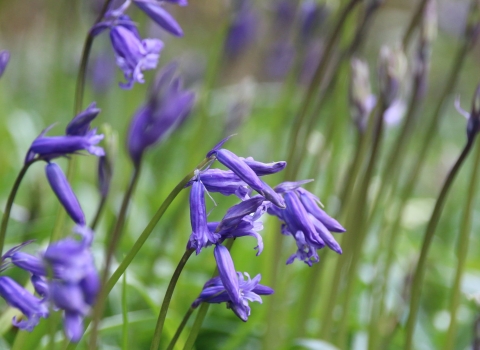Rose Wood is currently closed until further notice due to tree felling works taking place on site to deal with ash dieback in the area. Thank you for your cooperation.
Location
Know before you go
Dogs
Visit the 'Dog walking on reserves' page in the Contact section for more information.
When to visit
Opening times
Open at all timesBest time to visit
Spring and summerAbout the reserve
Rose Wood is mainly ancient semi-natural woodland on the west side of Shute Shelve Hill with steep slopes down to the A38. The ancient semi-natural woodland consists mainly of Ash and Hazel with some Oak and Small-leaved Lime, but there are also some mature Beech trees present in the wood. In parts of the wood the ground flora is very rich with Ransoms, Dog’s Mercury, Bluebells, Wood Anemone, Wood Spurge, Lesser Celandine, Pignut, Cuckoo Pint several types of Violets and Primroses.
There are also several patches of the nationally rare Purple Gromwell, a south west ancient woodland indicator, and Meadow Saffron also occurs throughout the wood. The woodland has been somewhat altered due to planting of Beech, probably in the 18th century.
Planting of conifers has also taken place in the past, including Scots Pine and Larch. These conifers are about 60 to 80 years old. The Larches in particular are dying and provide significant dead wood. A number of the Beech trees have also begun to collapse allowing some natural woodland regeneration in the gaps.
Birds seen in the wood include Blackbird, Robin, Chiffchaff, Blackcap, Raven (breeding), Greater Spotted Woodpecker, Green Woodpecker, Stockdove, Blue tit, Great Tit, Coal Tit, Redstart and Jay. Road noise from the adjacent A38 is very intrusive in the reserve.
Rose Wood is part of the Mendip Woodlands Special Area of Conservation.
Reserve conservation management – Removal of non native trees. Thinning of native species to promote a structurally varied woodland with a range of ages of trees. Blocks or “coupes” of hazel are coppiced on rotation, providing habitat for dormice, which acts as a corridor running from East to West across the Mendips.



